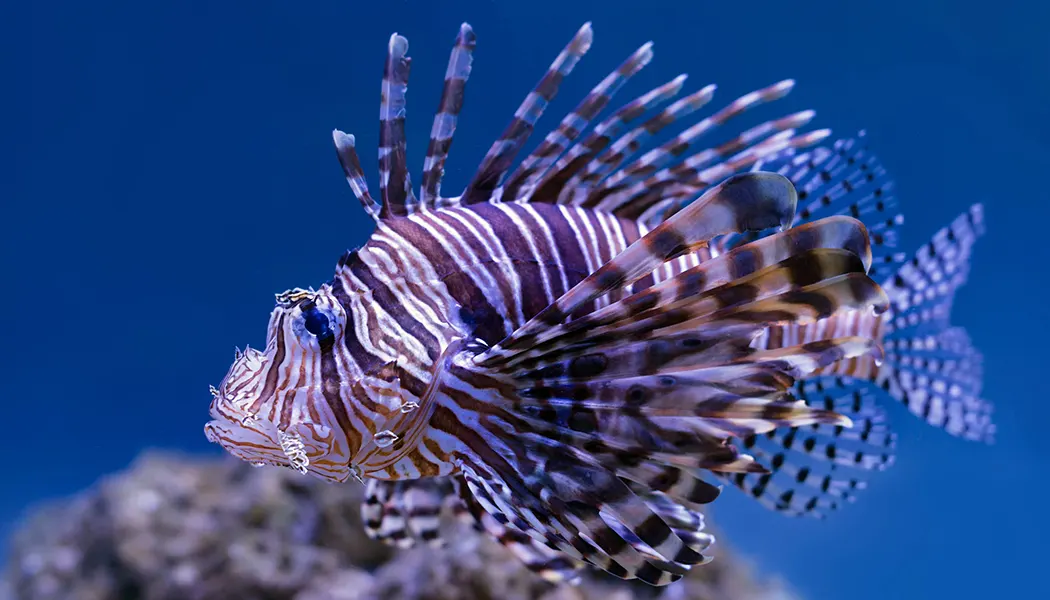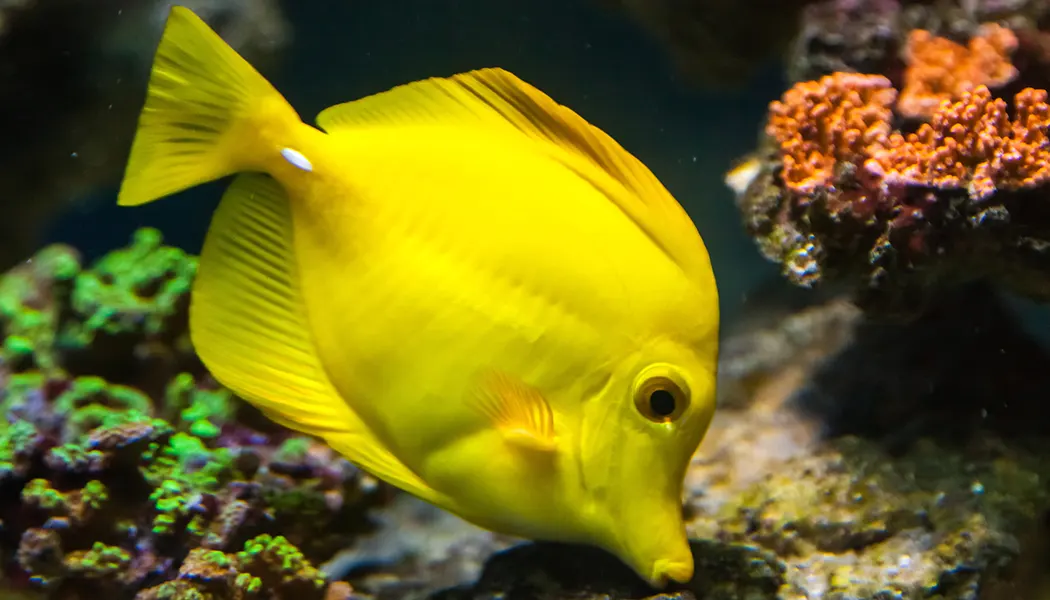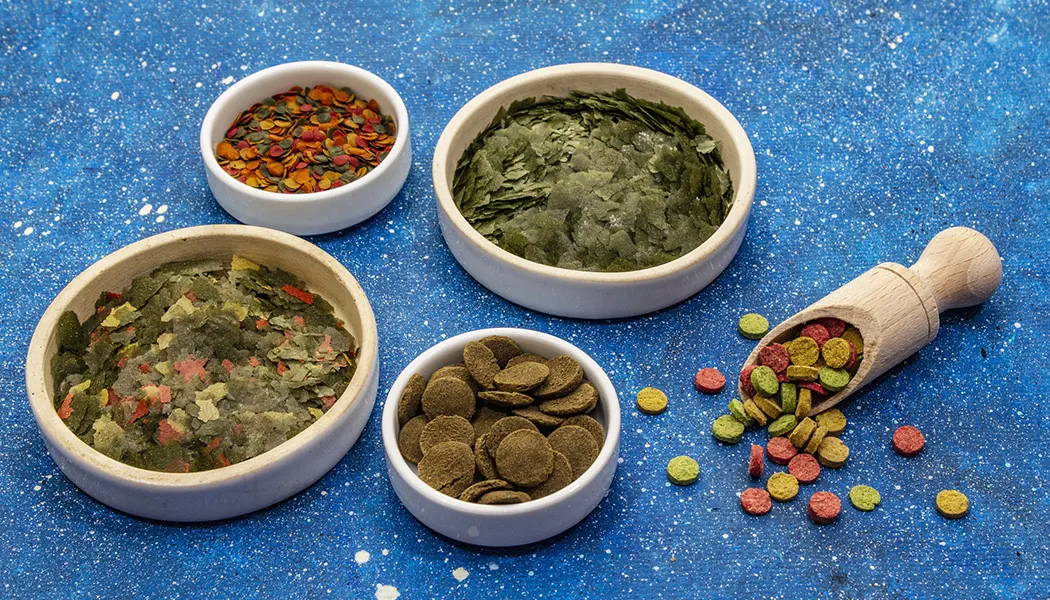Choosing the best saltwater fish food is crucial for vibrant, healthy marine life but with so many options, where do you start?
For instance, in my 150 gallon reef tank, I balance three daily frozen cubes (veggie blend, mysis, and brine shrimp) with weekly nori sheets to keep fish thriving and water parameters stable.
This guide simplifies the process, covering species specific diets, top food types, and actionable feeding strategies to avoid common pitfalls.
Table of Contents
Key Takeaways
- Specific Fish Diets: Saltwater fish need tailored nutrition, carnivores (40–50% protein), herbivores (algae-based), and omnivores (rotating blends)—to meet their nutritional needs.
- Prioritize Whole Ingredients: Opt for fish foods with whole proteins (krill, shrimp) and avoid fillers like soy or wheat.
- Diverse Food Types: Combine pellets, frozen foods (e.g., mysis shrimp), and coral-specific blends to mimic natural diets and boost health.
- Avoid Overfeeding: Feed small portions 1–3x daily (based on species) and remove leftovers within 2–3 minutes to prevent water contamination.
- Reef Tank Care: Supplement corals with phytoplankton/zooplankton 2–3x weekly and test water quality to balance fish and coral needs.
Why Saltwater Fish Have Unique Dietary Needs

Saltwater fish require specialized diets due to their distinct physiology and natural habitats. Unlike freshwater fish, marine fish often rely on protein rich prey like crustaceans, plankton, and algae in the wild.
For example, carnivorous fish (e.g., lionfish) need 40-50% protein in their diets, while herbivores (e.g., tangs) demand algae-based foods for digestion, reflecting the nutritional needs of marine fish (NOAA, 2023).
Three critical factors differentiate their diets:
- Higher Protein Requirements: Marine ecosystems provide fewer plant based foods, so saltwater fish thrive on diets with 30-50% protein from sources like squid, shrimp, or fish meal.
- Essential Fatty Acids: Omega-3s (DHA and EPA) from marine sources support cell function and reduce inflammation. Without these, fish may show faded colors or weakened immunity.
- Vitamins & Minerals:
- Vitamin C: Boosts immunity (critical for stressed fish in captivity).
- Iodine & Magnesium: Vital for metabolic processes and osmoregulation in saltwater environments.
Saltwater species also need trace elements like iodine to mimic ocean water chemistry. For instance, a study in Aquaculture Research found that clownfish fed iodine rich diets had higher survival rates in reef tanks.
To replicate natural diets:
- Carnivores: Prioritize frozen mysis shrimp or pellets with krill.
- Herbivores: Use spirulina-based flakes or nori sheets.
- Omnivores: Rotate between protein and algae blends.
Ignoring these needs can lead to malnutrition try to always match food types to your fish’s natural behavior and habitat.
Types of Saltwater Fish Food
Saltwater fish thrive on diverse diets tailored to their natural behaviors. Below are the primary food categories, their pros/cons, and top examples:
Pellets / Flakes
- ✅Pros: Easy to portion, shelf-stable, and fortified with vitamins. Slow sinking pellets (e.g., New Life Spectrum Thera+A) suit bottom feeders, while floating flakes (e.g., Omega One Marine Flakes) work for surface eaters.
- ❌Cons: Low-quality options may contain fillers like wheat.
- ⭐Best for: Daily feeding; look for fish food pellets with 40%+ protein.
Frozen Foods
- ✅Pros: Retain nutrients and mimic live prey (e.g., LRS Reef Frenzy and PE Mysis with mysis shrimp). Ideal for picky eaters like mandarins.
- ❌Cons: Require thawing and refrigeration; spoils faster.
- ⭐Best for: Growth rate, enhancing color, and immunity.
Freeze-Dried Foods
- ✅Pros: Lightweight, long shelf life, and no thawing needed (e.g., San Francisco Bay Brand Krill).
- ❌Cons: Less nutritious unless enriched; may cause bloating.
Live Foods
- ✅Pros: Stimulate hunting instincts (e.g., live brine shrimp or copepods).
- ❌Cons: Risk of parasites; costly and time-consuming to maintain.
Coral Specific Foods
- ✅Pros: Support reef health with phytoplankton or zooplankton blends (e.g., Reef Nutrition R.O.E.).
- ❌Cons: Overfeeding can spike nitrates.
How to Choose the Best Saltwater Fish Food

Selecting the right food for your saltwater aquarium starts with understanding your fish’s biology and habitat. Always tailor your choice to your tank’s unique ecosystem when deciding how to choose fish food.
Here’s a streamlined guide to simplify the process:
1. Match Food to Fish Species
- Herbivores (e.g., tangs, surgeonfish): Prioritize algae-based flakes or nori sheets.
- Carnivores (e.g., lionfish, groupers): Opt for protein-rich pellets or frozen shrimp/squid blends.
- Omnivores (e.g., clownfish): Use rotating diets combining plant and animal sources.
2. Prioritize High-Quality Ingredients
- Look for: Whole proteins (squid, krill, shrimp) as the first ingredient. These mirror the nutritional needs of marine fish.
- Avoid: Fillers like soy, wheat, or artificial dyes, which lack nutrients and harm water quality.
3. Optimize Pellet Size
- Small fish (e.g., firefish): 0.5–1mm pellets.
- Medium fish (e.g., angelfish): 1–2mm pellets.
- Large fish (e.g., triggers): 3–5mm pellets.
4. Trust Reputable Brands & Certifications
- Brands like Hikari and New Life Spectrum meet rigorous standards.
- Certifications (e.g., MSC, ASC) ensure sustainable sourcing.
Feeding Tips for Your Reef Tank

Maintaining a healthy saltwater aquarium hinges on proper feeding practices. Below are actionable strategies to optimize nutrition and tank health:
Notes:
- Small Fish: Feed 1–2 pellets or a pinch of flakes per fish.
- Medium/Large Fish: Offer 1–2 thawed frozen shrimp or a cube-sized portion.
- Herbivores: Add 1 algae sheet weekly.
For my reef tank, I’m currently feeding three cubes of food per day. One vegi blend, one mysis shrimp, and one brine shrimp. Plus 2-4 nori sheets for the tangs weekly.
Feeding Frequency
- Most marine fish like 1–2 small feedings daily.
- Fish should finish the food in 2–3 minutes. Reduce portions if leftovers remain.
- Herbivores (e.g., tangs) need frequent grazing and offer algae sheets 2–3x weekly.
- Carnivores (e.g., lionfish) do well with one protein rich meal.
- Test parameters weekly and cut portions if your having issues maintaing your nitrate levels.
Feeding Portion Control by Tank Size
Tailor portions to tank size, fish count, and species. Below are general guidelines for stocked tanks (adjust based on actual bioload):
| Tank Size | Example Stocking | Daily Portion |
|---|---|---|
| 20 Gallon | 2–3 small fish (e.g., clownfish, gobies) | 1–2 small pinches of flakes or 4–5 pellets |
| 40 Gallon | 4–5 small/medium fish (e.g., firefish, blennies) | 1 frozen cube or .5 tsp pellets |
| 50 Gallon | 5–6 small fish + 1 medium fish (e.g., dwarf angelfish) | 1.5 frozen cubes or .75 tsp pellets |
| 75 Gallon | 6–8 medium fish (e.g., tangs, wrasses) | 2 frozen cubes or 1 tsp pellets + 1 algae sheet weekly |
| 120 Gallon | 10–12 mixed fish (e.g., triggers, anthias) | 2 frozen cubes or 2 tsp pellets + 2 algae sheets weekly |
| 150 Gallon | Large species (e.g., lionfish, groupers) + reef | 3 frozen cubes or 3 tsp pellets + 2 algae sheets + coral food 2x weekly |
Frequently Asked Questions
What is the best food to feed saltwater fish?
The optimal diet depends on species: carnivores want protein rich foods like frozen mysis shrimp or high-quality pellets, herbivores need algae sheets or spirulina flakes, and omnivores benefit from rotating both. Prioritize whole ingredients (e.g., squid, krill) and avoid fillers.
How often to feed saltwater fish?
Carnivores (e.g., lionfish, groupers) need 1 daily meal of protein-rich foods like frozen shrimp or pellets. Herbivores (e.g., tangs, surgeonfish) require 2–3 feedings daily with algae sheets or nori to mimic natural grazing. Omnivores like clownfish need 1–2 daily feedings, rotating between flakes, pellets, and frozen mysis shrimp.
Should you feed saltwater fish every day?
Yes, you should feed your fish at least once a day. Some species require multiple feedings throughout the day.
 Mixed Reef Tank
Mixed Reef Tank

